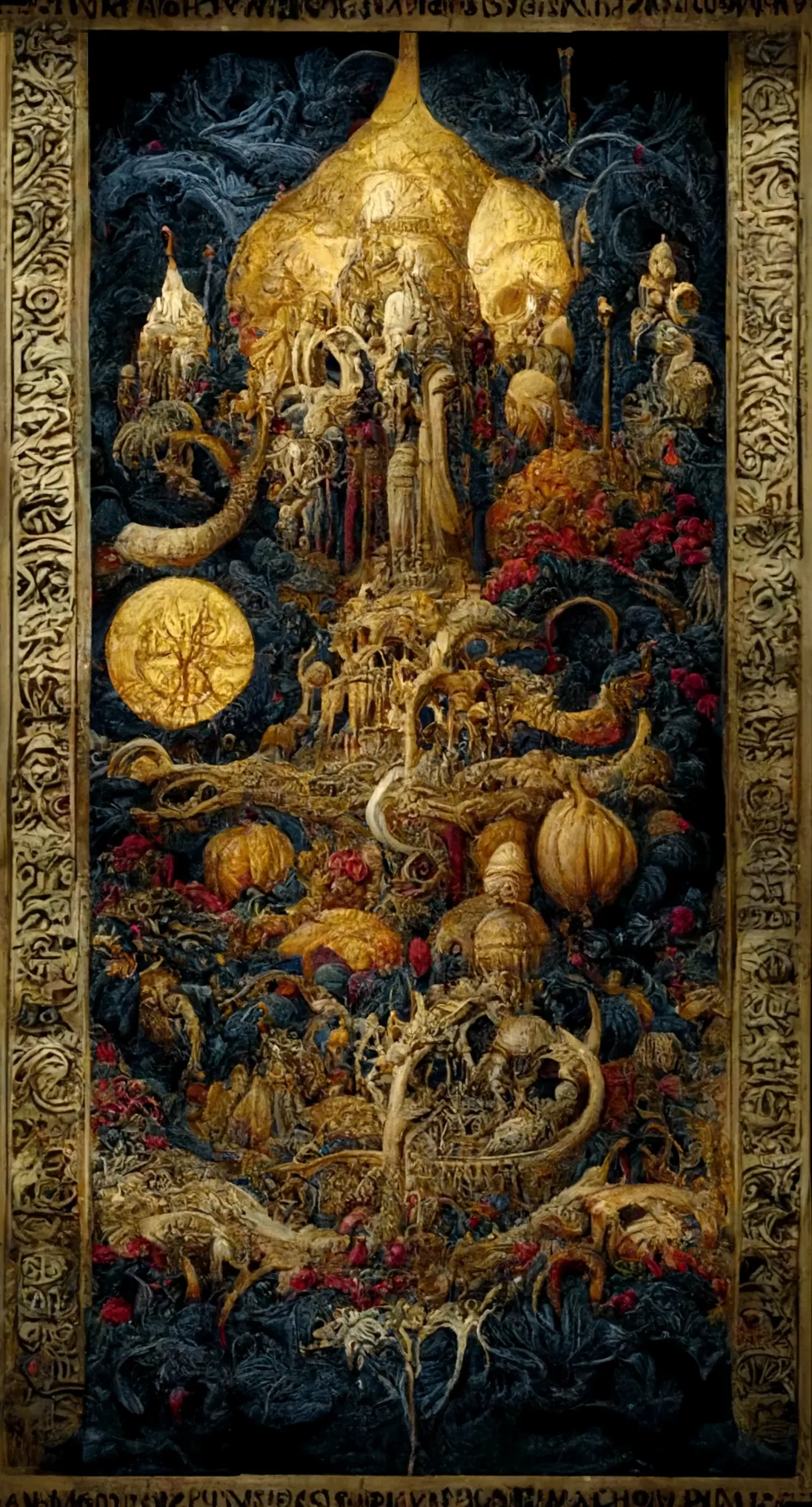Intertwined Kingdoms
This beautiful tapestry suffered the ire of a king, and the mercy of a fairy queen. It holds a story that ties to our own proclivity for coming apart, as much as our eternal hope for togetherness.

The relationship between humans and magical beings has always been strained, but never as much as during the Middle Ages, and nowhere as notably as in Great Britain, where the veil between the realms is often thinner.
King Edward IV attempted to reconcile the human and magical kingdoms, inviting their rulers to a conclave at Eltham Palace. He commissioned the Three Realms Tapestry to commemorate the occasion.
The bottom of the piece represents the Otherworld, home of the Tuath Dé Danann, and their underground cities. Its middle describes the people under the sun—the humans and their dwellings. At the top of the tapestry we can see the kingdom of Faerie and its famous flower-shaped palace, residence of the Ethereal Monarchs. The roots and branches of the Tree of Life connect the realms, symbolizing our common core.
Even the fae, who often dismissed human art as crude and unappealing, praised the delicacy of the Three Realms Tapestry. However, King Edward's conclave was a little less than a disaster. What started as a celebration turned sour as soon as alcohol flowed. Some historians suspect the fairies spiked the wine with a truth enchantment, as this would match their fondness for devising chaos.
An inebriated King Edward revealed he had bedded Elderflower, a noble fairy from Queen Titania's entourage. This confession infuriated the fairy queen, not so much because she cared about the human king's indiscretions, but because he'd rejected her own advances in the past.
Regarding the Tuath Dé Danann, Mórrígan the Phantom Queen aired her grievances against both the humans and the fae for their refusal to help in the battle against their sworn enemies, the Fomorians (even if this event had happened years before King Edward even existed). In turn, the English king accused them and the fairy realm of plotting against him during the War of the Roses.
Anger escalated, and King Edward ended the reunion with one severe gesture: he ripped the beautiful tapestry with his sword in three pieces, gave each ruler the fragment that represented their realm, and sent them away.
Two of the three pieces would come together a century later, when Faerie and the Otherworld became one after the Treaty of Ashenvale. The third remained with the British Royal Family until 1880, when Queen Victoria and the faeries joined forces to stop the imminent rise of the Elder god Thurgoth. To celebrate their success, Queen Titania restored The Three Realms Tapestry to its former glory with a magic kiss, and gave it to the humans as a symbol of gratitude and restored trust.
H.C. Ravensfield added The Three Realms Tapestry to the collection in 1939, as payment from the British Museum for his financial and logistical help when relocating and securing their artwork to protect it from potential Nazi bombings.
We come together, and we come apart. But as long as enough of us wish to put away our differences and protect the beauty and wonder in our world, we will be saved.
H.C. Ravensfield




